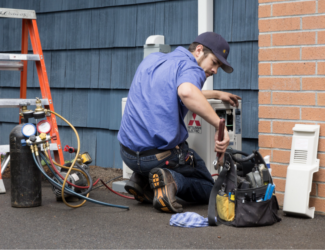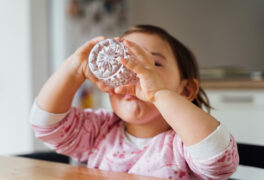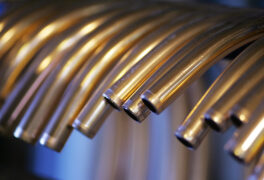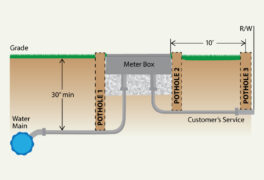
Water
Snohomish County PUD originally started as a water utility in 1946. Over 75 years later, we proudly serve more than 23,000 customers. See a few of the things we do by clicking here.
General water service questions:425-397-3000 (M-F, 7:30 am to 4 pm)
Water service issues: 425-783-1000
Click here for an important message to our customers about ongoing meter replacements
Water service
Conserving water
Construction projects
Frozen water pipes
Connect Up Water
Integrated System water quality report
Satellite Systems water quality report
Water main flushing
Safe & reliable drinking water
The PUD abides by the water quality regulations outlined in the State Department of Health and the Environmental Protection Agency’s Safe Drinking Water Standards.
Most of our customers are supplied with water purchased from the City of Everett, and some customers are supplied by well water. The water purchased by the PUD from the City of Everett is filtered, treated and chlorinated to maintain purity. Fluoride is also added to the water.
Treatment provided for the water systems supplied by wells varies depending on the characteristics of the well source.
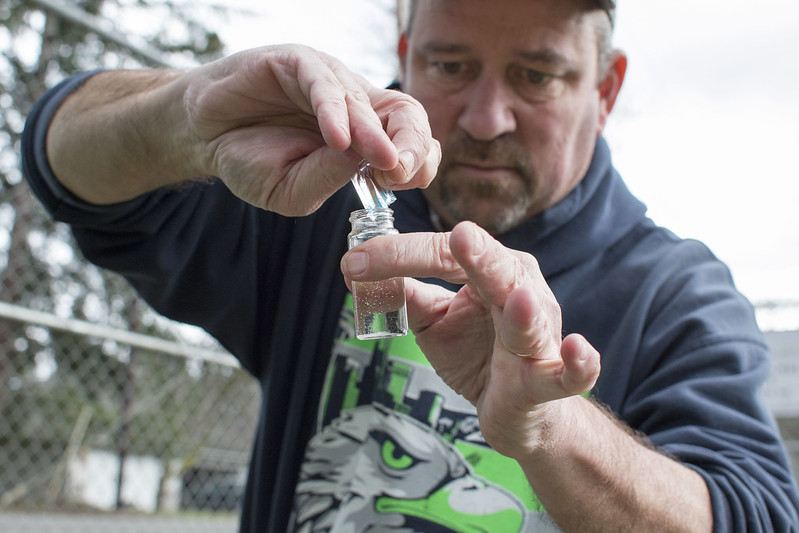
The PUD has full-time water supply specialists who assure your drinking water is safe to drink by routinely testing for bacteria and chemical impurities. The types of testing and frequency will depend on the size, location, susceptibility to contamination and other factors. There are two general categories of tests that are scheduled: bacteriological (organic) and chemical (inorganic).
Bacteriological tests are conducted monthly at various locations of the distribution system. The PUD maintains a coliform-testing plan that identifies frequency and location of sample sites.
Chemical testing varies tremendously. The types of tests conducted include:
- Synthetic Organic Compounds (SOCs): Generally testing for the presence of pesticides
- Volatile Organic Compounds (VOCs): Testing for petroleum based products
- Total Trihalomethanes (TTHMs): Testing for by-products of chlorine
- Radionuclides: Testing for the presence of radioactive substances
- Nitrates: Testing for by-products of septic systems, dairy farms, poultry farms etc.
- Lead and Copper: Tests showing high level of these metals may indicate highly corrosive water which deteriorates pipes
- Inorganic Compounds: Testing for the presence of metals, salts and sulfates
The PUD takes the sample and sends them into a state-approved laboratory, which then sends the results to the State of Washington Department of Health as well as to the PUD.
Water FAQ
How can I find my water meter?
Meters are generally situated on your property near a road on a utility easement or right-of-way. Look for a rectangular black lid on the meter box, which is flush to the ground.
I don’t understand “cubic feet.” Why can’t you measure my water in gallons?
The PUD measures water in cubic feet because it is the standard measurement in the industry. It is easy to figure out your water use in gallons. One cubic foot equals 7.48 gallons, so just multiply the number of cubic feet listed on your bill by 7.48 and your answer will reflect the amount of water used in gallons.
Where would I find my home’s shut off valve?
It is important to know where your shut off valve is in case you have a major leak. The most common locations in your house or apartment are:
- Where the water supply enters your home
- Near your clothes washer hook-up
- Near your water heater
To determine if the valve you have found is the correct one, try turning it off and see if it shuts off all water faucets in your home. If not, repeat this process with each valve you find until you locate the correct one. If you are unable to locate it, please contact your plumber for assistance. Once you’ve found the valve, it’s a good idea to mark it with something distinctive like bright paint, a tag or ribbon. This will help you locate it quickly in case of an emergency.
What should I do if I smell a strong chlorine odor?
Surprisingly, when you can detect a strong chlorine odor from your pipes, it generally means that your chlorine levels are low. This usually happens if you have a long service line where water can sit in your pipes for long periods. To eliminate this problem, run cold water through your bathtub faucet for 10-15 minutes. This will flush your service line and draw the correct chlorine residual to your home.
What do I do when my water turns a rusty brown color?
The iron and manganese sediments that are stirred up in the water, after pipe flushing or a hydrant has been used, may cause this discoloration. Either turn your outside faucet on or run cold water through your bathtub for 10-15 minutes. If your water does not clear up after that period, call PUD Customer Service at 425-783-1000.
What are those white particles on my faucet screen?
Occasionally customers notice tiny white particles in their tap water. This type of problem originates inside certain older hot water tanks manufactured between 1993 and 1996 that have been equipped with a “dip tube.” The dip tube delivers incoming cold water to the bottom of the tank where it can be heated. At the same time, it drives the hot water in the upper portion of the tank to the open hot water faucet. Problems begin when the dip tube breaks off and floats inside the tank, and then it slowly begins to deteriorate. While these particles do not pose a health risk, they can decrease water flow from household faucets and diminish water heater efficiency.
If you believe you have a defective dip tube, contact the water heater manufacturer to find out if it’s repairable or if you have to replace the water heater tank.
What is that black stuff in my toilet?
It is not uncommon for a dark growth to appear in the toilet bowl rim. The growth travels very fast and can grow above and below the normal water level of the bowl. Fortunately, it is easily removed.
Bathrooms are often excellent breeding grounds for molds and mildew. There is little air circulation, plenty of moisture, and a continuous supply of bacteria in the air. You may want to add a teaspoon of fresh bleach to the toilet tank as it is filling
once a week to interrupt the growth inside the toilet bowl. An easier way is to purchase a toilet tank product that is dropped into the toilet tank. It should contain chlorine and is about the size of a hockey puck. Cleaning the toilet bowl before the growth first appears is the old-fashioned but effective way to assure a clean toilet bowl.
What is the pink stuff in my toilet, shower or pet’s dish?
Sometimes a slimy pink substance forms in moist areas around a customer’s home. You may see this substance in toilet bowls, on the surfaces in shower stalls and bathtub enclosures, in sinks and in pet water dishes.
This pink substance is created by an airborne bacteria (Serratia marcescens), which is common to our environment. The bacteria will grow in any moist location where phosphorous-containing materials or fatty substances accumulate. Sources of these substances include soap residue in bathing areas, feces in toilets, food residues in pet water dishes and areas where water is left standing long enough for the bacteria to grow.
The best way to control this substance is through periodic cleaning with a household cleaning product followed by disinfecting with chlorine bleach or disinfectant product.



